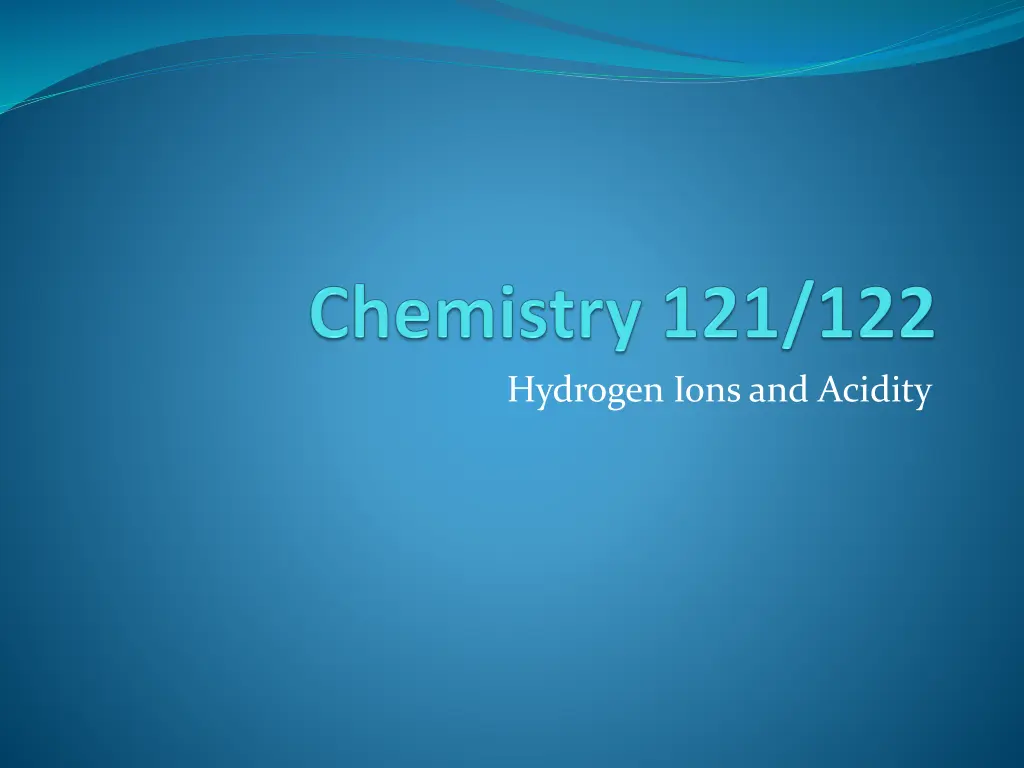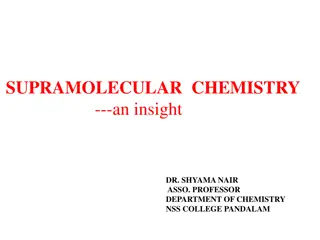
Understanding Hydrogen Ions and Acidity in Water
Explore the concept of hydrogen ions and acidity in water, including the self-ionization of water, ion product constant, and differences between acidic and basic solutions. Learn how the concentrations of H+ and OH- ions determine the acidity or alkalinity of a solution.
Download Presentation

Please find below an Image/Link to download the presentation.
The content on the website is provided AS IS for your information and personal use only. It may not be sold, licensed, or shared on other websites without obtaining consent from the author. If you encounter any issues during the download, it is possible that the publisher has removed the file from their server.
You are allowed to download the files provided on this website for personal or commercial use, subject to the condition that they are used lawfully. All files are the property of their respective owners.
The content on the website is provided AS IS for your information and personal use only. It may not be sold, licensed, or shared on other websites without obtaining consent from the author.
E N D
Presentation Transcript
Hydrogen Ions from Water Water is highly polar what does that mean? Water particles are in continuous motion If they possess enough energy, a H+can be transferred from one water molecule to another The particle that remains once the H+leaves is OH- The water molecule gaining the H+ becomes hydronium (H3O+) H2O(l)+ H2O(l) H3O+(aq)+ OH-(aq)
Self-ionization of water Another way of writing the ionization of water is: H2O(l) Hydronium and hydrogen ions can be written interchangeably Both examples show water forming ions The equilibrium concentration for both hydrogen and hydroxide ions is very small at 25 C Each is only 1 x 10-7M When both [H+] and [OH-] are equal in concentration, the solution is said to be neutral H+(aq)+ OH-(aq)
Ion Product Constant for Water In any aqueous solution, as hydrogen ion concentration increases, hydroxide ion concentration decreases and vice versa The product of the hydrogen-hydroxide concentration is 1 x 10-14 In other words, the Kw= [H+][OH-] = 1 x 10-14
Acidic and Basic Solutions When acids form aqueous solutions, there is more H+ ions than OH-(coming from the ionization of water) The [H+] is greater than 1 x 10-7 M Basic solutions are the opposite The hydroxide ion concentration is greater than the hydrogen ion concentration The [OH-] is greater than 1 x 10-7M ( The [H+] is less than 1 10 7M) They are otherwise known as alkaline solutions
Acidic and Basic Solutions A solution in which [H+] is greater than [OH ] is an acidic solution. The [H+] is greater than 1 10 7M. A basic solution is one in which [H+] is less than [OH ]. The [H+] is less than 1 10 7M Basic solutions are also known as alkaline solutions
Sample Problem, p. 596 Complete 9, 10, p. 596
Calculating pH (power of hydrogen) Ranges from 0 14 Neutral solutions have a pH of 7 The closer the pH is to zero, the more acidic it is; the closer it is to 14, the more basic it is To calculate pH from the hydrogen ion concentration, pH = -log[H+] Determine the pH of 1.0 x 10-5 by putting the H ion value in for [H+]
Calculating pOH pH + pOH = 14 pOH = -log[OH-] Express concentrations in scientific notation When writing the pH or pOH, the concentration of the solution is equivalent to the same number of digits after the decimal of the value itself Ex. 1.0 x 10-5 = 5.00 (two digits in the base of the scientific notation two digits after the decimal)
When is pH not a whole number? Most of the time As a result, it is not easy to make a simple mental calculation. Instead, use the logarithmic equation to convert from concentration to pH or pOH. = 4.2 x 10-10M = -log[4.2 x 10-10] = 9.37675 = 9.38 Ex. [H+] pH
Calculating [H+] from pH Rearrange the equation pH = -log[H+] [H+] = - antilog(10X) pH Using Kw, in addition to pH/pOH, [H+]/[OH-], you can solve for any unknown [H+] = 10x -6.35 =4.5 x 10-7 M Ex. pH = 6.35
Assignment 9-10, p 596 11-12, p. 599 13-14 p 600 15-16 p 601 Worksheet
Sample Problem 19.4, p. 601 Questions 15-16, p. 601
Acid-Base Indicators An indicator (HIn) is an acid or base that undergoes dissociation in a known pH range They are valuable tools because its acid form and base form have different colors in solution Most indicators have a narrow pH range that they detect (2 pH units) examples Bromophenopl blue aprrox. 2.9-4.5 Phenolphthalein is colourless up to pH 8 and eventually turns bright pink at pH 10
Indicator paper is also used to determine if a substance is an acid or a base Ex. Red litmus paper turns blue in basic substance but remain red if substance is neutral or acidic. Limitations of Indicators Only good at room temperature Indicator color can be distorted if solution isn t colorless Dissolved salts in solution can affect the dissociation of the indicator To get the most precise readings, a pH meter should be used
Page 601 #15 & 16 Page 604 #17- 21 Practice Problems 19.1 & 19.2















